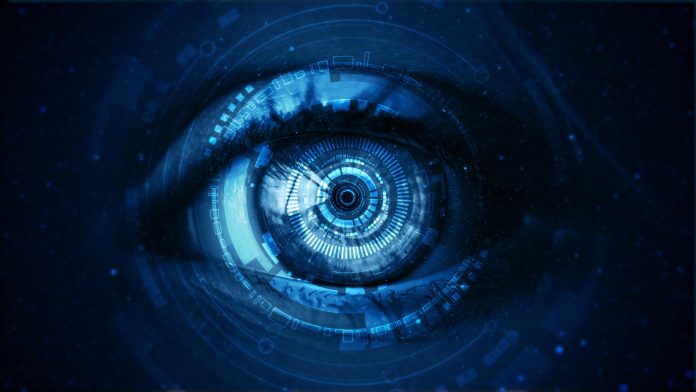AI is set to transform the public sector to be more inclusive and accessible, creating new ways to remove barriers for people with disabilities
Bu the scale of the challenge is significant. The World Health Organisation reports that 1.4 billion people worldwide have a long-term disability, while in the UK, about 16 million people – one in four – have some form of disability. These impairments range from visual and auditory to sensorimotor, speech, cognitive, and mental health conditions.
AI has huge potential to address these challenges by improving user experiences, supporting inclusive working methods, and building better public services. It can help the public sector become more accessible and better cater to individuals with diverse disabilities. But how can this be achieved?
Solutions to benefit the visually impaired: Inclusive and accessible
AI tools can create accurate descriptions of images, charts, and graphs, making visual content accessible to people with visual impairments. One standout example of AI making a difference is the “Be My AI”, a recent extension of the Be My Eyes platform. Be My Eyes connects visually impaired users with sighted volunteers through a live video call. Volunteers assist users with tasks that require vision, like reading labels, distinguishing colours, or navigating new environments.
The Be My AI app takes this concept further by integrating AI-powered image recognition to provide immediate assistance with vivid descriptions of images and scenes without the need for a human volunteer.
Furthermore, AI-driven OCR (optical character recognition) technology can convert printed text into spoken words or Braille, making essential information more accessible.
Public sector organisations can integrate such tools into their services to assist visually impaired individuals with tasks like reading official documents, navigating public spaces, or using public transportation.
Finding and fixing accessibility errors
AI can also be used to scan public sector websites and apps to find and suggest fixes for accessibility issues, ensuring they meet and go beyond standards like WCAG (Web Content Accessibility Guidelines). This proactive approach can make digital content more accessible and ensure continuous improvement and adherence to best practice guidelines.
Cognitive assistance
AI can also help simplify complex information for people with learning or cognitive difficulties. Public sector organisations can use AI-powered tools to convert dense, jargon-filled documents into clear and straightforward formats, making vital information more accessible. Swindon Council, for example, has developed an AI application that quickly converts complex documents into easy-to-read formats, improving understanding for those with learning disabilities.
Additionally, AI can provide personalised support through virtual assistants that offer step-by-step guidance for tasks such as filling out forms, navigating websites, or accessing community resources. By adopting these AI solutions, public sector organisations can ensure that individuals with cognitive difficulties receive the assistance they need to engage fully with public services and be independent.
Assisting people who are hard of hearing
AI can greatly improve public sector services for individuals who are deaf or hard of hearing. Real-time translation technologies, such as AI-driven sign language interpreters, can bridge communication gaps by converting spoken language into sign language videos instantly. This is already being implemented in public transport systems, like London Waterloo station, to provide crucial travel information in sign language.
In addition, AI can enhance speech-to-text applications, allowing for accurate and immediate transcription of spoken words during public meetings, educational settings, and customer service interactions. By integrating these AI tools, public sector organisations can ensure that individuals who are deaf or hard of hearing have equal access to information and services so everyone can fully participate and engage.
Supporting people with speech impairments
AI can significantly enhance the public sector’s ability to support individuals with speech impairments too. Advanced speech recognition technologies, such as Google’s Project Euphonia, are designed to understand and process atypical speech patterns. This can improve interactions with voice-activated systems in public services, making it easier for individuals with speech impairments to access them.
Additionally, AI-powered applications like the Verboso app use gameplay to assist with speech therapy, analysing pronunciation, and providing real-time feedback during activities.
Public sector organisations can integrate these AI tools into their services, ensuring that people with speech impairments receive tailored support, improving their communication capabilities and overall accessibility to public resources.
Improving public sector workplaces
Beyond these specific applications, AI can help public sector organisations improve service delivery, increase efficiencies and support inclusive work environments. For instance, AI-driven analytics can identify inefficiencies in service delivery and suggest improvements, leading to faster and more accurate responses to public needs. Tools like chatbots can handle routine inquiries, freeing up staff to focus on more complex tasks.
In the workplace, AI can support diversity and inclusion initiatives by recognising and accommodating employee’s needs and conditions, such as ADHD, helping to create environments where all employees can thrive. Tools like Microsoft 365 are already using AI to help people work in ways that are more tailored to their own needs. For example, live meeting transcripts can improve access for those with hearing needs, whilst automated meeting summaries can help neurodiverse users reflect on meetings and more easily identify agreements and actions. When this is coupled with things that support cultural change, like adopting the Manual of Me, a powerful framework that helps employees discover and communicate their working preferences and needs, it’s a great way to help teams work better together.
AI can also enhance recruitment processes by reducing biases in candidate selection and supporting the development of diverse teams through anonymising applications and providing useful analytics.
Ethical considerations and user involvement
With all this said, it’s crucial to use AI responsibly. We need to involve real users in the design process, focus on user needs and context when designing products and services, and ensure quality and accuracy through continuous feedback. Ethical considerations are essential, ensuring AI systems are transparent, controllable, and free from bias. Involving diverse user groups in testing and gaining their feedback will ensure AI solutions are genuinely inclusive.
The UK government is taking steps in the right direction. A recent report from the Communications and Digital Committee called for a more positive vision for AI, particularly generative AI, to reap social and economic benefits and enable the UK to compete globally in this area.
Looking towards a more inclusive and accessible public sector
As we move forward, it’s important to remember that AI isn’t just about doing things faster. Its true potential lies in solving real human problems, helping people to understand information better, and removing barriers that have traditionally been hard to address.
By using the power of AI, we can break down barriers and design public services that include everyone, ensuring equal access and opportunities for all. The public sector has a unique chance to lead by example and create a more inclusive society through the innovative use of AI technology.
Our goal should be a world where technology serves everyone equally, helping them live fuller, more accessible lives. AI’s promise in the public sector lies not just in its advanced capabilities but also in its potential to create a fairer and more inclusive future for everyone.











